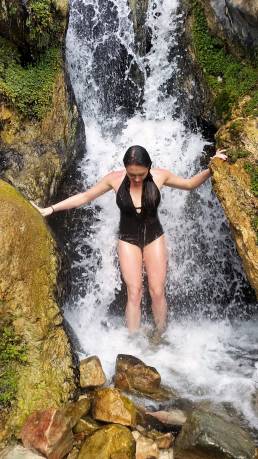Some time ago, as I was talking to a teacher of mine, I discovered that he used to take a freezing cold shower in the morning. My first exclamation was “I could die”!
I am sensitive to the cold, I thought I could never do it. But I asked anyway about the meaning of this practice, about the breathing to use, about the benefits.
Many cultures and disciplines include exposure to cold as a practice.
I found out that it strengthens the body and the immune system. I add here the link to a scientific research conducted on the subject.
Intrigued, I decided to try the cold shower. The following morning, as soon as I woke up, I warmed up with my daily routine of breathing, stretching, abdominals, push-ups and other exercises and prepared for the cold shower. I thought “I will surely die”.
The cold jet left me breathless. The big challenge is exactly this: breathing peacefully under the cold shower. At that moment I used a deliberately forced and noisy breathing, in order to react. There were places on the body where I felt the cold mostly. On the face, shoulders and back.
But then my body started to release heat. I no longer felt an annoying cold. The cold had become my friend. Nagging or unnecessary worries had disappeared. It was just the cold and I. No thoughts.
The change of mood towards lightness and wellness was immediate. Out of the shower, the sensation of internal heat remained. But above all, I had not died!
It has been a long time since I have included this practice in my daily exercises. I like it very much and it gives me the feeling of starting the day in a powerful way, with a lot of energy and a great spirit.
TIPS (if you’re going to try this practice!)
- Possibly, take a cold shower in the morning before breakfast.
- Warm-up with movements of the whole body before taking the shower.
- BEFORE the shower, spread oil or another greasy cream all over the body so as not to dehydrate the skin.
- PAY ATTENTION NOT TO SLIP.
- As soon as the cold jet arrives, use conscious breathing. Exhale in a noisy and fast way. Inhale through the nose and exhale through the mouth. Attention to hyperventilation. If your head gets slightly dizzy, resume normal breathing and exit the shower, being careful not to slip. With practice and time, you will be able to stay under the cold shower, breathing naturally and calmly.
- Stay in the shower for as much time as you like without forcing yourself.
- It is not necessary to wet your hair if you don’t want to. A shower cap can be used to also include the face and, if desired, the head under the jet.
- As soon as you get out of the shower, dry yourself well and dress immediately so as not to get cold.
- Please note: if you have the flu or are not well, it is better to avoid taking a cold shower. It is a stress for the body, a good stress because it stimulates the immune response. However, if your body is already fighting a flu, it is already under stress, better avoiding overloading it.
If you want to bring your practice to the extreme, you can visit the Wim Hof website, an athlete who created a method starting from the ancient Pranayama (breathing) practices and the exposure to cold and who has collaborated in various scientific experiments to prove the benefit of these techniques.
My recommendation is always to start new practices with common sense and in a gradual way, without extreme actions or forcing yourself. Above all, keep on listening to the feedback from your own body: how it feels and how it reacts to new practices.
Enjoy a powerful start of your day!
Photo courtesy of Katie Barnes on Unsplah
